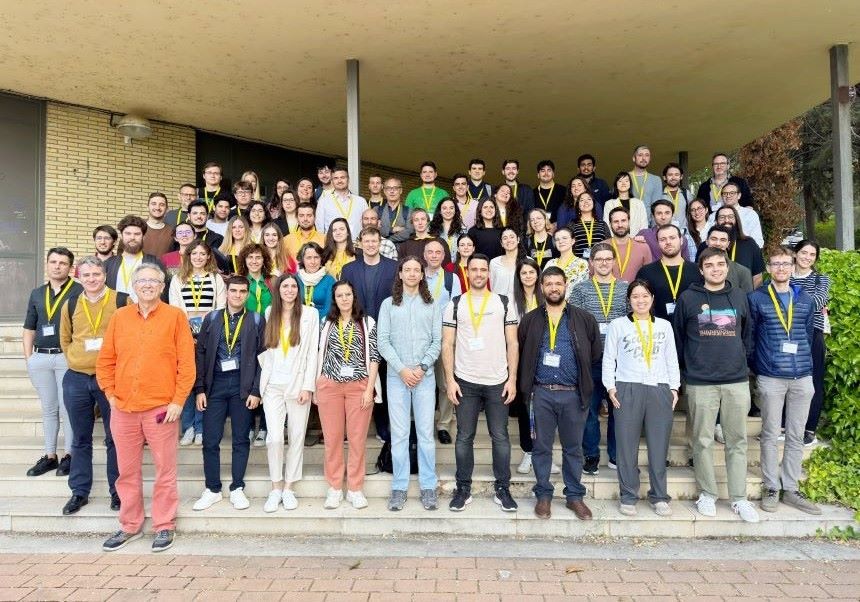International scientific collaboration produces comprehensive atlas of human skeletal muscle ageing
- Press Office
- April 22nd, 2024

The UV, INCLIVA and the Arnau de Vilanova Hospital in Valencia are participating in an international research project that studies gene expression and epigenetics in skeletal muscle cells at different ages to produce the most complete single-cell atlas of aged human skeletal muscle to date. This study, involving scientific teams from China, the United States and Spain, is published today in the journal Nature and identifies skeletal muscle cells amenable to medical, pharmacological and lifestyle interventions. This could have an impact on physical health and contribute to a longer lifespan. The international scientific collaboration is led by Pura Muñoz-Cánoves, ICREA research professor at the Universitat Pompeu Fabra in Barcelona. Fifteen major skeletal muscle cell populations discriminated from single-cell RNA analysis of more than 300,000 skeletal muscle biopsy cells from lower extremities.
In a world of rapidly ageing societies, a detailed understanding of the cause and progression of diseases associated with ageing is needed. Skeletal muscle is the key motor system of the human body and plays a fundamental role in the body's metabolic regulation. With increasing age, particularly in individuals over 80 years of age, skeletal muscles suffer from sarcopenia, a progressive loss of muscle mass and function that not only increases an individual's disability, but also plays a role in the rapid decline of overall function in older people, making them more frail. The underlying mechanisms of sarcopenia are not well understood and its biological basis has not been systematically investigated from a unified perspective.
Mari Carmen Gómez-Cabrera and Julio Doménech-Fernández (from the Universitat de València/INCLIVA and the Hospital Arnau de Vilanova in Valencia, respectively), as well as researchers from the Universitat Pompeu Fabra (UPF) in Barcelona, Altos Labs in San Diego (USA), BGI-Research, the first affiliated hospital of Guangdong Pharmaceutical University, the institutes of Biomedicine and Health in Guangzhou (Chinese Academy of Sciences), the Chinese Academy of Sciences, and the Guangzhou Institute of Biomedicine and Health (Chinese Academy of Sciences), have also participated in the research. The research team also includes researchers from BGI-Research, the first affiliated hospital of the Guangdong Pharmaceutical University, the Guangzhou Institutes of Biomedicine and Health (Chinese Academy of Sciences), and other institutions.
The study analysed the gene expression and epigenetic status of 387,000 individual cells in muscle biopsies from the lower limbs of 31 individuals of different sexes, ages and regional origins. With these data, they have outlined the most comprehensive single-cell atlas of the ageing human skeletal muscle to date, Multimodal cell atlas of the ageing human skeletal muscle.
This international collaboration has been led by Pura Muñoz-Cánoves, ICREA research professor in the Department of Medicine and Life Sciences at UPF, Barcelona, and now principal researcher at the Altos Labs Science Institute in San Diego, and Miguel. A. Esteban, from BGI-Research in Shenzhen. "As the most comprehensive single-cell atlas of human muscle ageing studied so far, it will be a reference for the fields of ageing as well as sarcopenia and frailty," said Pura Muñoz-Cánoves. Mari Carmen Gómez-Cabrera and Julio Doménech-Fernández emphasised that this atlas will also be an important reference for future studies in patients with neuromuscular disorders.
Human skeletal muscle is largely made up of muscle fibres (myofibres), of which there are two types. Type 1 muscle fibres are mainly involved in endurance physical activities, such as long-distance running or cycling. They have slow muscle contraction speed, high aerobic metabolism and high mitochondrial activity. Type 2 muscle fibres are important in physical activities that require sudden bursts of power, such as jumping, sprinting and weightlifting. They have faster muscle contraction speeds, are more prone to fatigue and rely primarily on anaerobic metabolism for energy production.
This paper describes how skeletal muscle cell populations, including both individual nuclei in multinucleated fibres and conventional mono-nucleated cells, change with ageing, as well as the multicellular networks underlying these changes. By comparing these data with genetic data, the team was also able to identify key predictors of susceptibility to sarcopenia.
The researchers found that as humans age, type 2 muscle fibres steadily deteriorate during the ageing process, while type 1 muscle fibres remain relatively stable and better tolerate the stresses of ageing. Cellular metabolism is also affected during the ageing process. While type 1 fibres become more glycolytic, type 1 muscle fibres increase oxidation. Importantly, with ageing, new subtypes of pro-regenerative and pro-degenerative myofibres emerge. These new populations may contribute to inducing the degenerative cascade of ageing muscle and are likely targets for intervention.
Muscles can repair themselves. This is mainly done by muscle stem cells that, upon injury, begin to proliferate and differentiate into muscle, fusing with each other or with existing muscle fibres to repair damaged muscle. The research found that these stem cells leave the quiescent state in aged muscles and enter a state of premature priming, which leads to a reduced regenerative capacity.
Meanwhile, during ageing, endothelial cells also undergo changes with increased pro-inflammatory and chemotactic signals, while immune cells increase in number and initiate inflammatory programmes. These changes make muscles more susceptible to deterioration in response to injury and may promote systemic inflammation and accelerate the deterioration of overall physical function in older people.
In addition, by cross-matching with genetic data, the researchers identified cell type-specific sites in chromatin, the mixture of DNA and proteins that make up chromosomes in human cells, associated with susceptibility to sarcopenia. These findings provide research teams with potential new targets for the future diagnosis and treatment of sarcopenia.
Miguel a. Esteban, one of the two authors of this study, stated: “Our joint scientific research provides a new perspective for understanding human skeletal muscle ageing and an exciting scientific basis for the development of preventive and therapeutic strategies”. "This atlas is the product of international collaboration and the development of massively parallel single-cell profiling technologies," said Dr. Yiwei Lai, first author of the study and member of the Chinese team.
Reference: Lai, Y; Ramírez-Pardo, I; Isern, J; An, J; Perdiguero, E; Serrano, A.L; Li, J; et al; Multimodal cell atlas of the ageing human skeletal muscle. Nature. 2024, Apr. DOI: 10.1038/s41586-024-07348-6
File in: Recerca, innovació i transferència
















